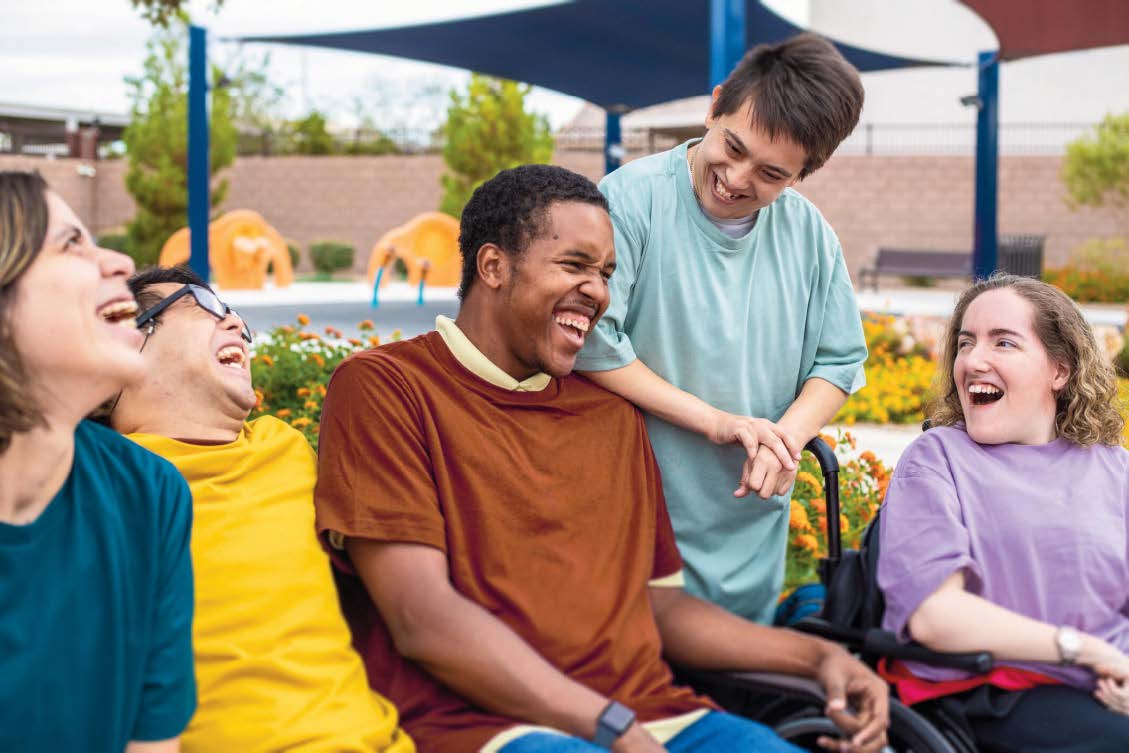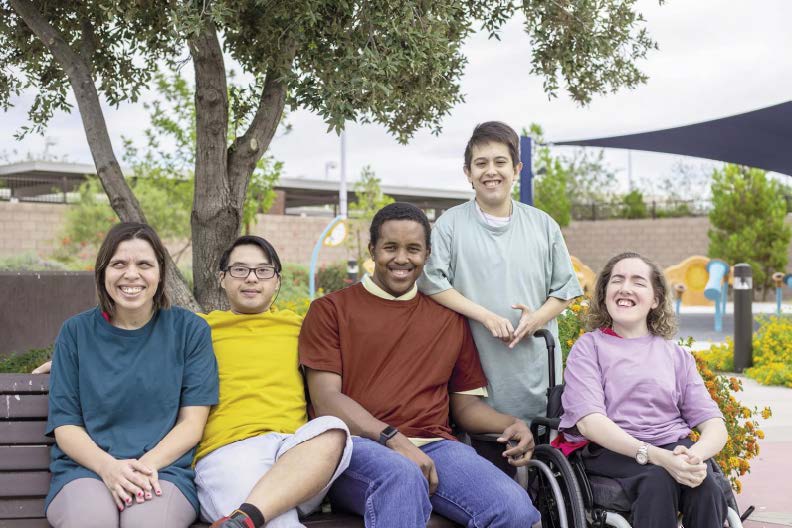ACCESSIBLE HOMES
A Look At Community-Based Housing for Adults with disabilities

LIVE AND BREATHE: Selecting the best place to live takes careful consideration for most people, but until recently this consideration has not been afforded to adults with disabilities.
BY MARY A. HOUSER, ED.D.
Parents have a lot to think about as their children grow up. There are the typical parental concerns such as how will my child do in school? Will he make friends? What career will he choose?
Parents of children with disabilities, however, often have additional concerns about their child's maturation than their typical counterparts. Perhaps one of the greatest areas of concern for exceptional parents is where their child will live as an adult after they pass away or when they are no longer able to care for him.
From the time a child with a disability is young, their parents begin to think about what life will be like for him as he grows older. Will he be able to live independently? Hold a job? What will he do for leisure activities? These realities can rest heavy on the minds of parents. Today in the United States, there are approximately 61 million individuals living with some type of disability (CDC, 2021). Examples of disabilities include autism spectrum disorder, intellectual impairments, and physical disabilities to name a few. The extent to which a person is impacted by his disability ranges from mild to severe and will have a lasting impact on his ability to function as an adult and the extent to which support will be needed for him to be successful and happy.
Selecting the best place to live takes careful consideration for most people. Historically, however, this consideration has not been afforded to adults with disabilities. In fact, housing options for adults with disabilities once painted a grim picture. To illustrate, in the mid-1800s, adults with disabilities were forced to live in psychiatric institutions which were segregated environments apart from their typical peers and families. This paradigm was referred to as the "institutional care model" and was the primary option for this population of people. It was common for medical doctors to recommend these state public hospitals to parents of children with moderate to severe disabilities for their long-term housing needs. These living environments were horrendous. Frequent reports indicated they were overcrowded, understaffed, and filthy places in which to live and the conditions often led to the abuse of individuals with disabilities.
Originally, it was thought that these institutions would serve as "training schools" for adults with disabilities. The hope was, under this model, adults with intellectual disabilities could be trained to perform basic living skills that would increase their ability to become part of their communities. The sad reality was that the number of individuals with disabilities was increasing rapidly, and institutions had difficulties keeping up with the demands they set forth. Ultimately, these institutions became custodial living arrangements instead.
Institutionalization for adults with disabilities lasted for many years. During this time, the civil rights of individuals was disabilities were largely ignored. They had no input into how they lived or where they lived. In the not-so-distant past, a movement toward better inclusion of adult with disabilities began to emerge when the families of those living in institutions wanted a better life for their loved ones. The history of deinstitutionalization occurred over many years and in many stages. The first notable change came about when states created small community programs and discharged adults with disabilities who were said to be responding well to antipsychotic medication and thought fit to live outside the hospital walls. Although many policies over the years have contributed to deinstitutionalization, it is worth mentioning a group of activists, known as the Independent Living Movement. From the 1960s to the 1980s, they worked tirelessly to put an end to institutional living. The results of their efforts are largely what is known as the community living model.

THE PURSUIT OF HAPPINESS: Several community-based models have emerged as the result of deinstitutionalization. No longer will adults with disabilities be denied their civil rights with respect to where they live.
In essence, the community living model permits adults with disabilities to live in the community of their choosing alongside their typical peers. Another major advancement in the integration of adults with disabilities came about as the result of a landmark Supreme Court case known as Olmstead v. LC (1999). This case determined that unnecessarily segregating individuals with disabilities was unlawful. The Olmstead v LC case centered around two adult women with disabilities who felt they were being unfairly kept in an institution and believed they could get better services in the community than in an institution. It was as a result of this court case that the Olmstead Act was born. This act subsidizes individuals with disabilities so they are able to live in the local community and receive state funds to finance their support services as opposed to living in an institution. The Olmstead Act has led to the closing of many institutions across the U.S.
In the past 20 years, community-based housing options for adults with disabilities have grown. In a true community-based housing model, adults with disabilities are not simply housed in local communities, but they are fully integrated into their communities and become an integral part of community life. In this model, adults with disabilities are afforded the same rights as their non-disabled peers. Examples of integration include being able to shop in the same stores at the same time as their non-disabled peers, and having the freedom to make choices about their own housing. Adults with disabilities are often provided support services to successfully live in the community through Home and Community-Based Services (HCBS) which is funded through Medicaid. Over the past years since the inception of The Olmstead Act, different community-based housing options for individuals have been created. Each of these models offers a different style of living, depending on the individual and his family's preference.
A common question about housing for adult with disabilities is, "How can it be paid for?" There are a few funding options. Options are largely based on eligibility and often vary from state to state. Some people will use private pay such as funds from their ABLE accounts or Special Needs' Trusts to help finance their housing. Other individuals who receive Supplemental Security Income (SSI) might put these funds toward their housing needs. There are also Section 8 Rental Vouchers which are made available through housing assistance programs at local housing g authorities to help pay rent. Medicaid Home and Community-Based Service (HCBS) Waivers provide money to Medicaid beneficiaries to receive services in their own homes and community rather than in an institution (they do not pay rent, however).
Integrating adults with disabilities into neighborhoods is not only on the rise, but is now also the law. No longer will adults with disabilities be denied their civil rights with respect to where they live. Several community-based models have emerged as the result of deinstitutionalization. Hopefully, these are just the beginning of many more to come. •
ABOUT THE AUTHOR:
Dr. Mary A. Houser is an associate professor in the Department of Special Education at West Chester University of Pennsylvania. She teaches both undergraduate and graduate courses in foundations of special education, behavior management, autism spectrum disorder (ASD), language development, and family systems. She also serves as an educational consultant to The American College of Financial Services.
References
Autism Speaks (2020). Housing and Community Living. Retrieved from www. autismspeaks.org/housing-community-living Center for Disease Control (2021). Disability impacts all of us. Retrieved from: cdc.gov/ncbddd/disabilityandhealth/infographic-disability-impacts-all.html